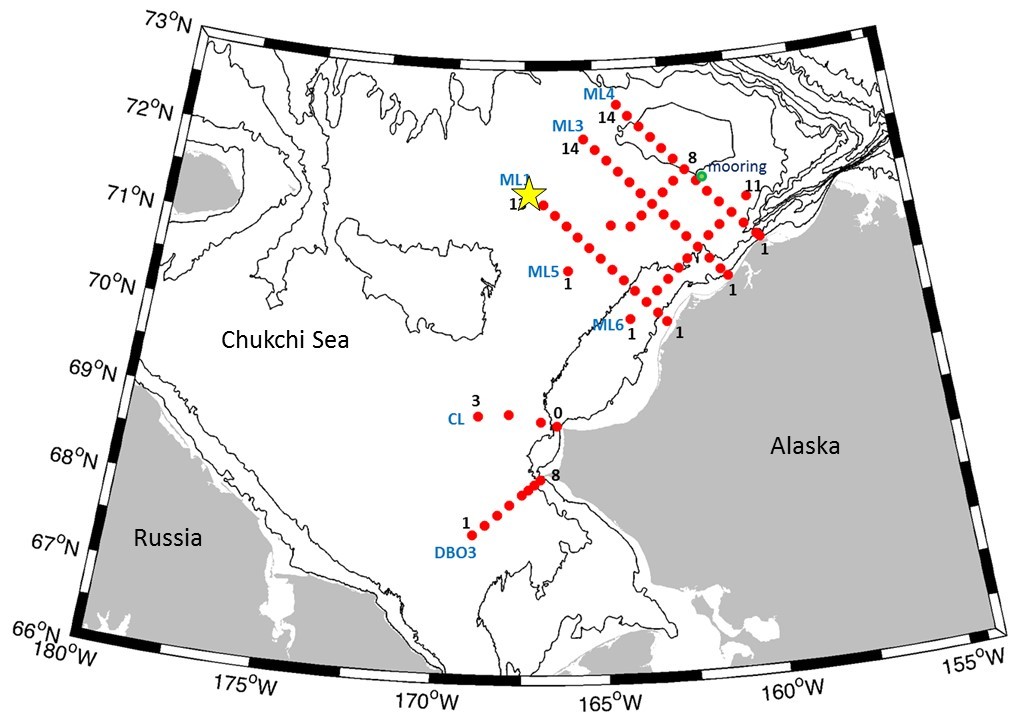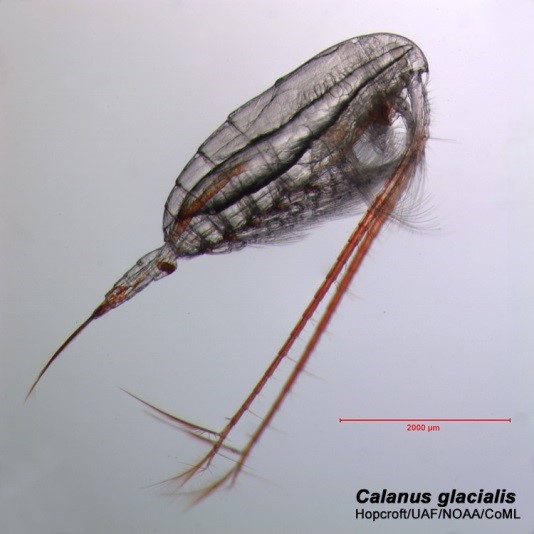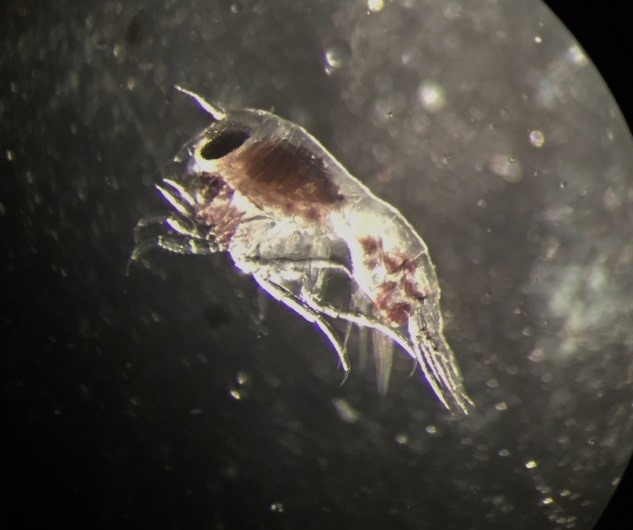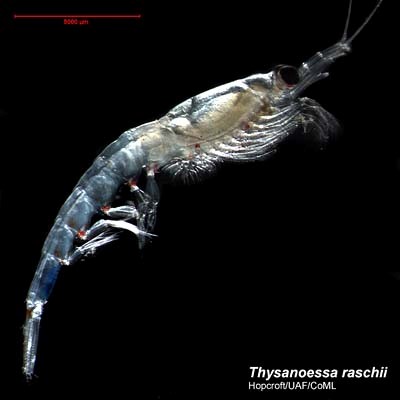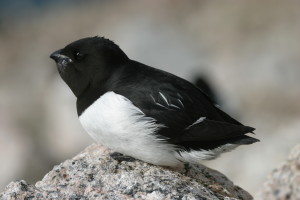Seabirds are charismatic megafauna—they are large animals that have popular appeal due to their cute or beautiful appearance. So what about all the little critters out there? They deserve our attention too, though it may take a microscope to truly appreciate them. I asked planktonologist Caitlin Smoot to tell us a little bit about zooplankton, many of which are beautiful enough in their own right to be considered charismatic microfauna:
Zooplankton are drifting animals. They are carried by ocean currents and cannot swim large horizontal distances on their own. Zooplankton are the most numerous multicellular animals on earth and are critical links in the ocean’s food web. They connect phytoplankton at the base of the food web to upper trophic levels like fish, marine mammals, and birds. Zooplankton come in a variety of shapes and sizes; here are some examples of the types of zooplankton we have been catching in our nets!
This copepod, Calanus glacialis, is about the size of a grain of rice. Copepods are dominant in the zooplankton community in the Chukchi Sea. Photo credit: Russell Hopcroft (UAF).
A hyperiid amphipod (Themisto sp.). Photo credit: Caitlin Smoot (UAF).
Energy-rich krill are often a favorite food of whales. Photo credit: Russell Hopcroft (UAF).
This large jellyfish (Chrysaora sp.) often slimes up our nets! The animal in the photo above is about the size of a dinner plate. Photo credit: Caitlin Smoot (UAF).
Speaking of zooplankton, we saw some Dovekies! These small seabirds swim underwater to capture their zooplankton prey. They are the most abundant alcid in the north Atlantic Ocean, where their population is estimated at 16 – 36 million individuals. Their breeding population in Alaska is estimated at less than 100 individuals. So, seeing one is always a special occasion.
Dovekie: Photo credit Flemming Merkel
We caught an octopus in the bottom trawl a couple nights ago, which I was very excited about. Octopus are really neat creatures because they are incredibly intelligent and have unique physiological characteristics. I would love to study them! Shhh don’t tell the birds I said that…

